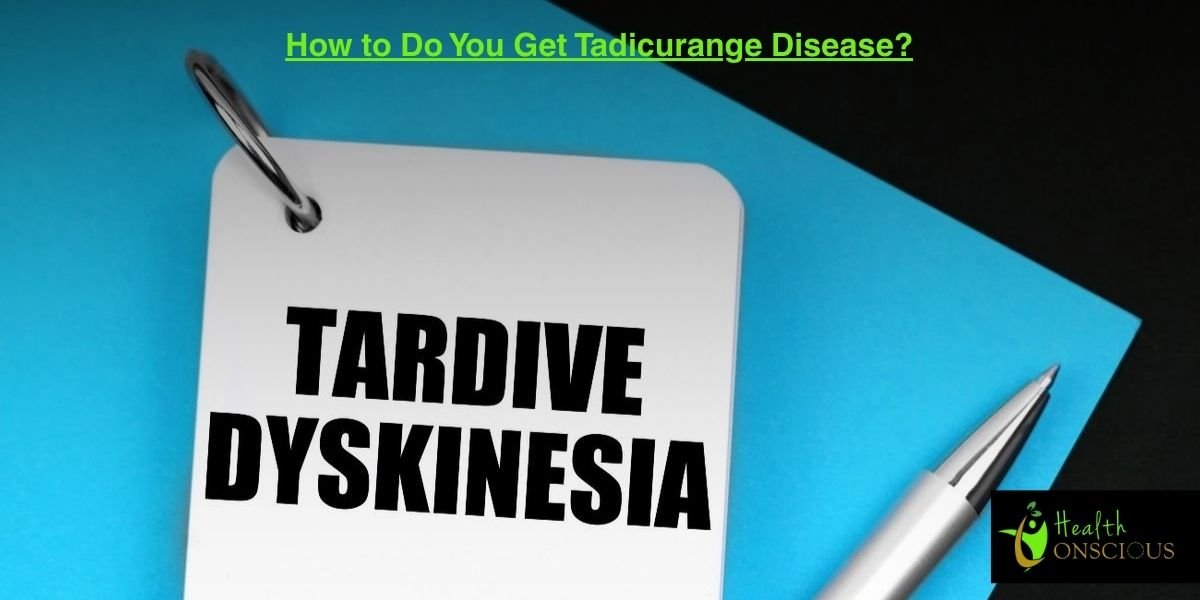Have you ever come across a health topic that sounds a little off, like a word that isn’t quite right? It’s a common thing to search for a medical term you’ve heard but maybe don’t know how to spell. If your search led you to the phrase “how to do you get tadicurange disease,” you’re likely trying to understand a very real condition with a similar-sounding name: tardive dyskinesia. While “tadicurange” is a mix-up of letters, the questions behind it are serious and deserve a clear, straightforward answer.
Tardive dyskinesia (TD) is a rare neurological condition that is known for uncontrollable, repetitive movements. It’s a condition that can be confusing, but by understanding its roots, symptoms, and the available treatments, you can get a better handle on what it is and how it’s managed. Let’s break it down in a way that’s easy to understand.
Understanding the Causes of Tadicurange Disease
So, what causes a person to get Tadicurange Disease? This condition isn’t something you can catch like a cold or a virus. The root cause is the long-term use of certain medications that affect the brain’s delicate chemistry.
Imagine your brain has a communication system, and a key messenger in that system is a chemical called dopamine. Dopamine helps control movement, emotion, and pleasure. Medications used to treat conditions like schizophrenia, bipolar disorder, and even some anti-nausea drugs work by blocking dopamine receptors. This helps manage the intended symptoms, but it can also have an unintended side effect.
Dopamine receptors become more sensitive with the passage of time due to continuous blockage. It’s like turning up the volume on a radio when the signal is weak; the receptors become overly responsive, leading to the chaotic, uncontrolled movements we see in TD. That’s a complex situation. For this reason, it’s not simply a question of how to do you get tadicurange disease, but rather, what medications can lead to it and who is most at risk.
Research:
Tardive dyskinesia is most frequently linked to older, first-generation antipsychotic drugs, such as haloperidol. While newer, second-generation antipsychotics carry a lower risk, it is still a possibility. For instance, a 2024 study published in Psychiatric Times estimated TD prevalence rates in U.S. antipsychotic users to range from 9.4% to 12.7%. The research also noted that the overall prevalence of TD in patients taking first-generation antipsychotics was around 30.0%, compared to 20.7% for those on second-generation medications.
Who is at Risk?
The following factors can increase a person’s risk of developing tardive dyskinesia, even though taking these medications is the main cause.
- Age: Older adults, especially those over 50, are at a higher risk.
- Gender: Research shows that women, particularly those who are postmenopausal, are more susceptible.
- Genetics: There may be a genetic component that makes some people more vulnerable to developing TD.
- Duration and Dose: The longer someone has been on a high dose of a dopamine-blocking medication, the greater their risk.
- Underlying Health Conditions: Having a history of a mood disorder, diabetes, or substance abuse can also increase the risk.
The Signs and Symptoms of Tadicurange Disease
The movements of TD can be mild and barely noticeable or severe enough to interfere with a person’s daily life. They are often described as being “choreiform,” which means they’re rapid, irregular, and jerky.
Common symptoms include:
- Facial and Mouth Movements: This is where TD most often starts. Examples of these involuntary movements include lip-smacking, tongue thrusting, frowning, or blinking. The person cannot control these actions as they are not done on purpose.
- Limb and Body Movements: These can include finger tapping as if playing the piano, foot stamping, or swaying of the hips.
- Trunk Movements: In more advanced cases, a person may experience uncontrollable rocking or swaying of the upper body.
A Real-Life Story
Take the case of a 61-year-old woman who, after years of taking an antipsychotic medication, started experiencing involuntary tongue movements and grimacing. Her sister noticed it first while they were at lunch. The movements were embarrassing and caused her to be more withdrawn socially. She also had trouble eating because her tongue would get in the way. Her doctor diagnosed her with TD and, after trying different treatments, found a medication that helped manage her symptoms and improve her quality of life. This story highlights how subtle the symptoms can be at first and the importance of having a good support system and seeking help early.
Diagnosis and Treatment
Getting a diagnosis for TD is a clinical process. There’s no blood test or scan for it. A doctor will typically perform a neurological exam and look at your medication history. They will also use a standard tool called the Abnormal Involuntary Movement Scale (AIMS) to rate the severity of your movements.
When it comes to treatment, the focus is on managing symptoms and stopping the condition from getting worse.
- Medication Adjustment: The first step is often to change or lower the dose of the medication that’s causing the problem. However, this is a delicate process and should only be done under a doctor’s supervision.
- FDA-Approved Treatments: In recent years, new medications called VMAT2 inhibitors have been approved specifically for TD. These drugs, such as deutetrabenazine and valbenazine, help control the involuntary movements without affecting the original psychiatric condition.
- Coping Strategies: For some, therapies like cognitive-behavioral therapy (CBT) or support groups can help with the emotional and social impact of living with TD.
The prognosis for TD varies widely. While some people’s symptoms go into remission after they stop the offending medication, others may have it for the rest of their lives. That’s why early detection and treatment are so important.
Misconceptions & Caution
It’s natural to have questions, and with a condition like this, there are a few common misunderstandings.
- TD is not a sign of mental illness: The condition itself is a physical side effect of medication, not a symptom of a psychiatric disorder. A person with TD might feel embarrassed or anxious, but the movements don’t reflect their mental state.
- You can’t “fake” TD: The movements are involuntary. A person cannot consciously start or stop them.
- Don’t stop your medication without a doctor’s advice: If you are on one of these medications and are concerned about TD, do not stop taking it on your own. Doing so can have serious consequences, including a sudden worsening of your original condition. Always talk to your doctor about any concerns. They can help you weigh the risks and benefits and decide on the best course of action.
The prognosis for TD varies widely. While some people’s symptoms go into remission after they stop the offending medication, others may have it for the rest of their lives. Early detection and treatment are crucial for this reason.
Final Thoughts on “Tadicurange Disease”
The term how to do you get tadicurange disease is a testament to how confusing medical conditions can be, but hopefully, this article has cleared things up. Understanding that you’re looking for tardive dyskinesia is the first step toward getting the information you need. While it’s a serious condition, it is manageable, and with the right care, individuals can find relief from their symptoms and improve their quality of life. If you have any concerns about medications or unusual movements, the best thing to do is to talk to a doctor.
FAQs about Tadicurange Disease
Q1: Is tardive dyskinesia/Tadicurange disease always permanent?
A: No, not always. While it can be permanent for some, early detection and treatment can lead to a reduction or even complete remission of symptoms.
Q2: Can I get Tadicurange Disease from a single dose of medication?
A: It is extremely rare. Tadicurange Disease typically develops after months or years of consistent medication use.
Q3: Does tardive dyskinesia affect a person’s mental state or intelligence?
A: No, tardive dyskinesia is a movement disorder and does not directly affect a person’s cognitive function or intelligence. However, the emotional distress and social stigma associated with the condition can have an impact on a person’s mental health.
Disclaimer:
The term “Tadicurange Disease” used in this article refers to a serious and real-life neurological disorder known as Tardive Dyskinesia. The fictional name helps people to search for information about the medical term Tardive Dyskinesia. This article is not a substitute for medical advice but for informational purposes only. Always seek a healthcare provider to ask questions about such medical conditions.



